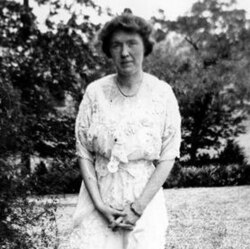There are many famous bunny rabbits; Bugs Bunny, Peter Rabbit, Peter Cottontail, the Easter bunny, the Velveteen Rabbit, Bunnicula, Reader Rabbit, and others not mentioned here. To our list, we need to add Hoppity Bunny from Hoppity Bunny’s Hop.
Hoppity Bunny is a curious little bunny. While he is investigating an airplane, he is snatched up by three humans and put in what the bunny calls the Giant Dragonfly. When  the plane makes an emergency landing, Hoppity escapes into the unfamiliar New Mexico desert. Each chapter introduces Hoppity to a desert resident and also to the dangers the desert holds, be it cactus needles. sticky pine cones, rattlesnakes or bobcats. Avoiding the perils of the desert with help from some of the animals like the prairie dogs and the jackrabbit, Hoppity makes his way back to the humans and the Giant Dragonfly so he can find his way home.
the plane makes an emergency landing, Hoppity escapes into the unfamiliar New Mexico desert. Each chapter introduces Hoppity to a desert resident and also to the dangers the desert holds, be it cactus needles. sticky pine cones, rattlesnakes or bobcats. Avoiding the perils of the desert with help from some of the animals like the prairie dogs and the jackrabbit, Hoppity makes his way back to the humans and the Giant Dragonfly so he can find his way home.
Hoppity’s creator, Ellizabeth Willis DeHuff (d. January 26, 1983), a noted author of children’s literature was born in Augusta, Georgia and grew up in Beech Island, South Carolina. She graduated from Tubman High School. Studying first at Lucy Cobb College in Atlanta, Georgia she finished her teacher’s training at Barnard College. Having met her husband John DeHuff while teaching in the Philippines, she went with him to Santa Fe, New Mexico where she developed a great interest in Native American culture and started her writing career with children’s plays, stories and magazine articles. Returning to Augusta after her husband’s death, she served as President of the Augusta Authors Club. She continued writing by contributing nostalgic pieces about her childhood for the Augusta Magazine and working as the society editor for The Augusta Chronicle.
DeHuff was credited with 13 titles for young readers. Setting Hoppity Bunny’s adventures in New Mexico is consistent her interest in the American Southwest and her aim to introduce young readers to the Southwest and Native American culture. Taytay’s Tales, her retelling of traditional Southwestern Native American stories is better example of these themes. A copy of this work can be found at UPenn Digital Library https://digital.library.upenn.edu/women/dehuff/taytay/taytay.html
The author also urged her students to express their heritage in their art. The Elizabeth Willis De Huff Collection of American Indian Art is housed in the Beinecke Rare Book and Manuscript Library at Yale. This collection holds 199 drawings by Native American students and the paintings focus on traditional Native American stories and religious rituals. As a teacher, DeHuff encouraged expressions of Native American art and was responsible for the early instruction of Fred Kabotie and Otis Poleonema among others.
She was responsible for a number of genealogical works focusing on her family lines. Her genealogical research papers are housed at the South Caroliniana Library, University of South Carolina. DeHuff’s personal papers seem to be divided among The University of New Mexico Center for Southwest Research and Yale University Beinecke Rare Book and Manuscript.
The Georgia Room holds the copy editor’s copy of the original manuscript of Hoppity Bunny’s Hop as well as a copy of the published book.
Recommended Resources:
Kirby Bill. “The Way We Were: Augusta author, artist DeHuff became expert on Southwest.” The Augusta Chronicle May 5, 2021 https://www.augustachronicle.com/story/news/2021/05/05/way-we-were-may-6-2021-elizabeth-dehuff-santa-fe-artists/4887940001/
Weideman, Paul. “A collector for the ages: Patron and writer Elizabeth Willis DeHuff” The New Mexican August 10, 2018 https://www.santafenewmexican.com/pasatiempo/art/a-collector-for-the-ages-patron-and-writer-elizabeth-willis-dehuff/article_d5023dd0-29f4-5557-ad45-a4f3d36e45bf.html

